Minnesota, often referred to as the “Land of 10,000 Lakes”, is home to an astounding variety of birds. One such bird is the red bird, which is also known as the northern cardinal.
It is a charming bird with brilliant red plumage that is common to the eastern and southern parts of the United States. While the red bird is not a migratory bird, it has expanded its range over the years and can now be found in Minnesota’s woodlands, forests, feeders, and backyards.
This article will provide more information on red birds in Minnesota, their physical attributes, behavior, habitat, and their place in the ecosystem.
1. Northern Cardinal
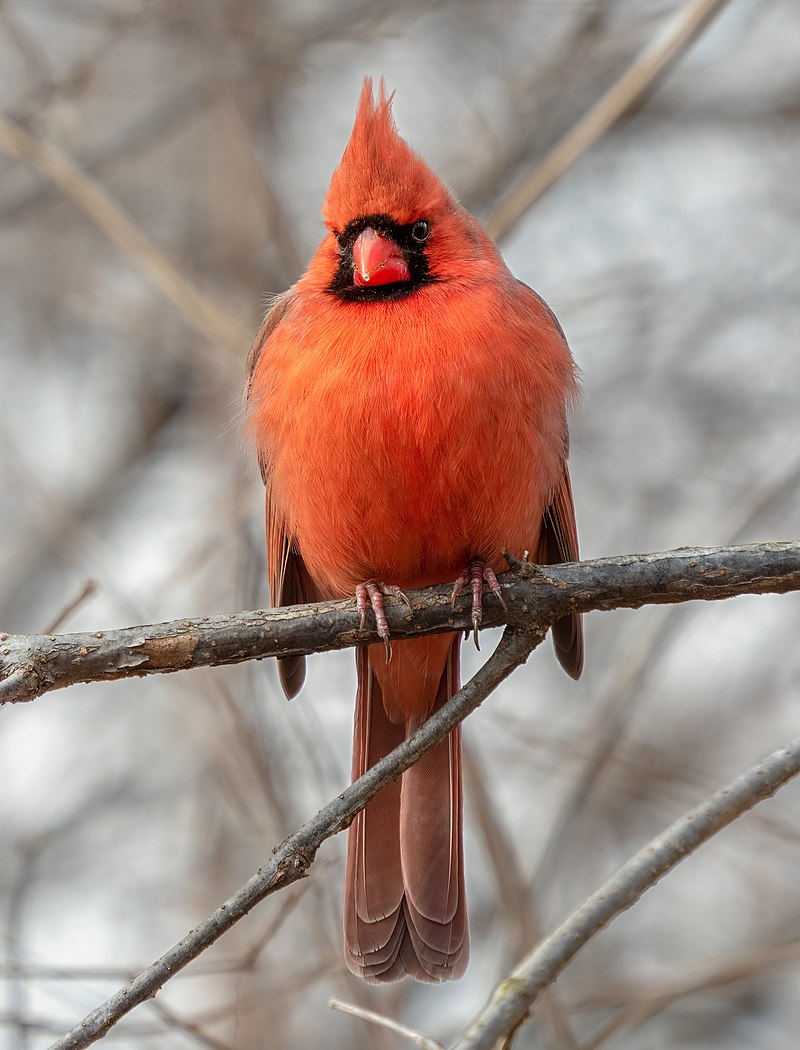
The Northern Cardinal is a beautiful bird, easily identified by its bright red plumage. It can be found in the eastern United States from Maine to Minnesota and south through Mexico and Belize.
Along with its striking colouration, it has a distinctive crest on its head and sharp black facial markings around the eyes.
Despite their small size (measuring 7-9 inches) they are very vocal birds – males sing persistently throughout springtime to attract mates or proclaim their territory.
They typically feed on insects, seeds and fruits but also enjoy suet at backyard bird feeders.
The female is less brightly coloured than her mate but still stands out among other songbirds due to her warm brownish-red feathers.
Cardinals pair for life so you may often see them together in your garden or neighbourhood park.Scientific classification:
| Kingdom | Animalia |
| Phylum | Chordata |
| Class | Aves |
| Order | Passeriformes |
| Family | Cardinalidae |
| Genus | Cardinalis |
| Species | C. cardinalis |
Also Featured In: Most Common United States Birds, Birds for Your Home Garden
2. American Robin

The American robin is a migratory bird, belonging to the true thrush genus and Turdidae family.
It was named after its European counterpart due to the similar reddish-orange breast they both possess; however, they are not related closely.
This species can be seen through most of North America during winter months, as well as in parts of Mexico and Central America where it also breeds.
They have plump bodies with gray upperparts and white underparts that vary from yellow on their throats down to orange toward their bellies.
Robins feed on fruits such as berries or insects like worms which makes them an important part of ecosystems by helping disperse seeds naturally throughout these areas.Scientific classification:
| Kingdom | Animalia |
| Phylum | Chordata |
| Class | Aves |
| Order | Passeriformes |
| Family | Turdidae |
| Genus | Turdus |
| Species | T. migratorius |
Also Featured In: Blue Birds You’ll Found around Us, Common Birds in the Cities
3. Common Loon
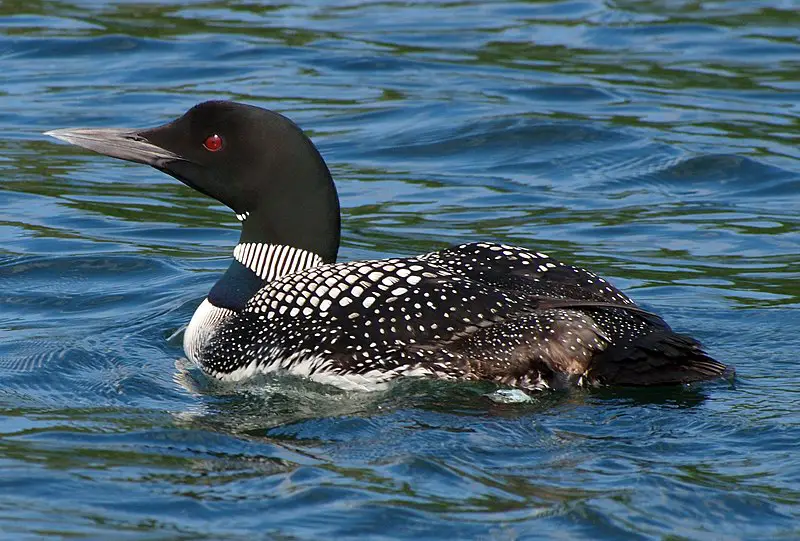
The Common Loon is a beautiful bird found in North America. It has a large black head and neck, with a greenish to purple sheen that stands out against its dark grey upperparts.
The underparts are pure white except for some black on the undertail coverts and vent.
During non-breeding season adults have brown plumage instead of the bright shades they show during breeding season.
They also exhibit unique behaviors such as diving underwater to catch fish or swimming along lakeshores while calling loudly, which is how they got their name “great northern diver”.
With their stunning colors and interesting behavior, it’s no wonder why these birds make up an iconic part of many landscapes across North America.Scientific classification:
| Kingdom | Animalia |
| Phylum | Chordata |
| Class | Aves |
| Order | Gaviiformes |
| Family | Gaviidae |
| Genus | Gavia |
| Species | G. immer |
Also Featured In: Water Birds Live around Us, Summer Birds that Live around Us
4. Downy Woodpecker
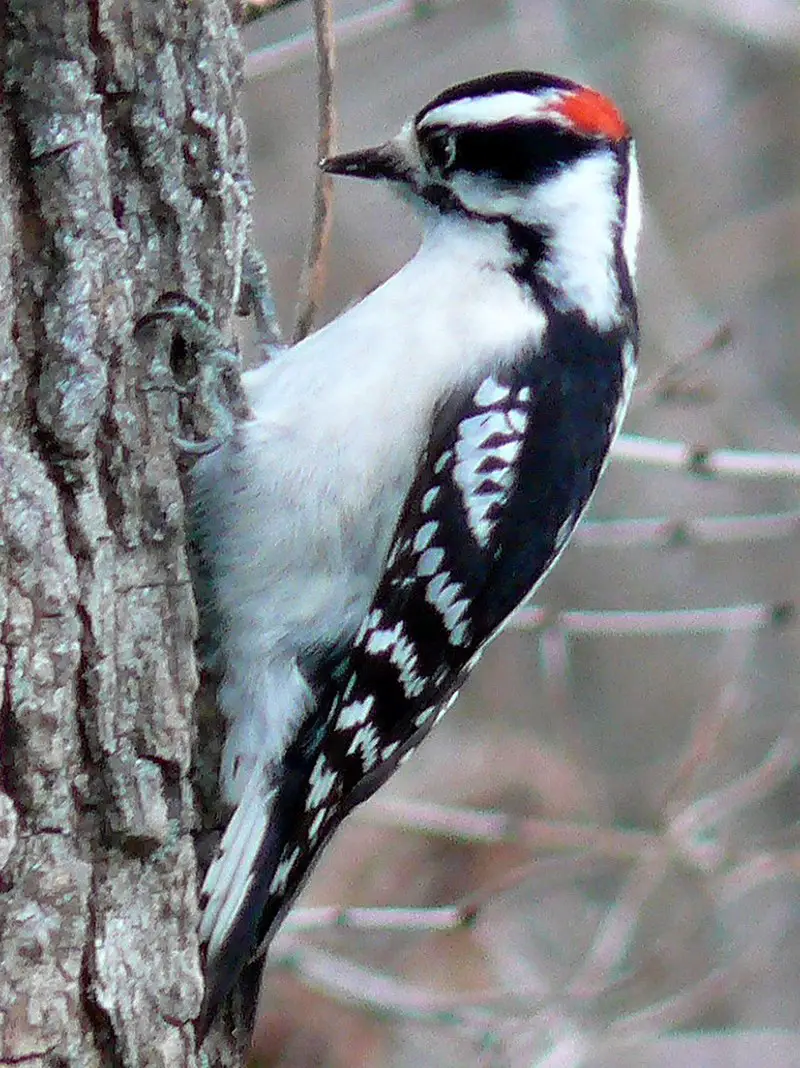
The downy woodpecker is a small species of woodpecker found in North America. Growing up to 7 inches long, it can be identified by its white belly and spotted wings.
It inhabits forests throughout the United States and Canada, with the exception of deserts in the southwest and northern tundra.
This bird nests in tree cavities and feeds mostly on insects but will supplement its diet with fruit or nuts when available.
The Downy Woodpecker has an unmistakable call that sounds like a loud ‘pik-er’, similar to other members of its family such as the Hairy Woodpecker.Scientific classification:
| Kingdom | Animalia |
| Phylum | Chordata |
| Class | Aves |
| Order | Piciformes |
| Family | Picidae |
| Genus | Dryobates |
| Species | D. pubescens |
Also Featured In: Long Island Birds You Should Know, British Columbian Birds
5. House Finch

The House Finch is a species of finch native to western North America and has been introduced in the eastern half of the continent as well as Hawaii.
It’s an average-sized finch with adults measuring 12.5 – 15 cm (5 – 6 inches) long and having wingspans between 20 – 25 cm (8 – 10 inches).
The upperparts are brown, while its underparts range from pale grayish white to yellow depending on subspecies.
Its face is streaked or spotted with reddish coloration; males typically have brighter plumage than females due to sexual dimorphism.
They’re mostly found near human habitations such as farms and gardens where they feed on grains, fruits, insects etc., making them very popular among birders who want something colorful for their backyard.Scientific classification:
| Kingdom | Animalia |
| Phylum | Chordata |
| Class | Aves |
| Order | Passeriformes |
| Family | Fringillidae |
| Subfamily | Carduelinae |
| Genus | Haemorhous |
| Species | H. mexicanus |
Also Featured In: Birds Live Near San Diego, Common Birds That Live in Las Vegas
6. Red-Winged Blackbird

The red-winged blackbird is a beautiful bird found in most of North America and Central America.
Its distinct features include a glossy black body, with white shoulder patches and bright red wing coverts year round.
It prefers wetland habitats such as marshes, ponds, lakeshores and agricultural fields. During breeding season they inhabit grassy areas near water then move south for the winter months.
For food they mainly eat insects but also consume wild fruit or grains.
They are very social birds often seen in large flocks during migration times when their unmistakable “conk-la-ree” call can be heard echoing across the sky.Scientific classification:
| Kingdom | Animalia |
| Phylum | Chordata |
| Class | Aves |
| Order | Passeriformes |
| Family | Icteridae |
| Genus | Agelaius |
| Species | A. phoeniceus |
Also Featured In: Birds Commonly Found in Northern California, Birds that Calls in the Morning
7. Barn Swallow
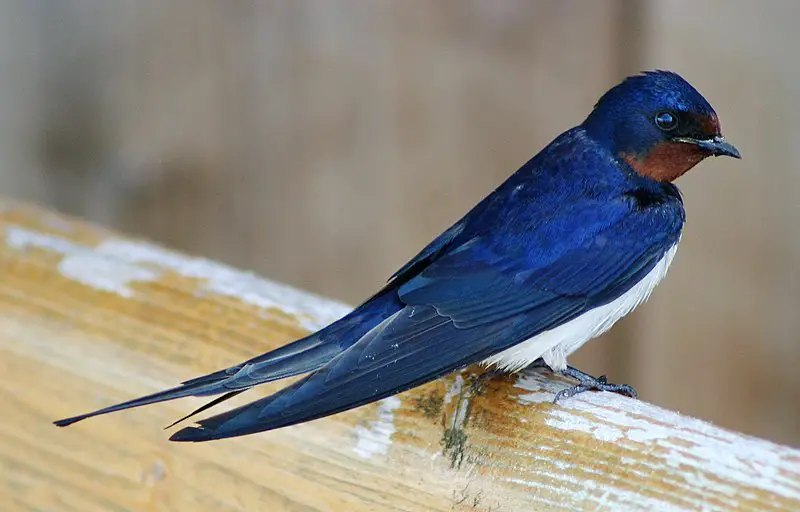
The Barn Swallow is a beautiful passerine bird with blue upperparts and a long, deeply forked tail. Found in Europe, Asia, Africa and the Americas.
It has an astonishingly large natural distribution spanning 251 million square kilometres globally; likely making it one of the world’s most widespread species.
This swallow typically nests near human habitation as well as other open areas such as fields or grasslands which provide them with suitable invertebrate prey to feed on.
They are insectivorous birds that often fly together in flocks looking for food over rivers or marshes usually just above tree-top level.
The barn swallow can also be identified by its strong flight consisting of swift continuous wing beats interspersed with glides during which they hold their wings slightly raised at the shoulders giving them distinct V shaped silhouettes in the sky.Scientific classification:
| Kingdom | Animalia |
| Phylum | Chordata |
| Class | Aves |
| Order | Passeriformes |
| Family | Hirundinidae |
| Genus | Hirundo |
| Species | H. rustica |
Also Featured In: Most Popular Bird Species in North America, Birds that Live in Croatia
8. Osprey

The Osprey is a majestic bird of prey with an incredibly wide habitat range. It has distinctive brown upperparts and greyish head and underparts, making it easily identifiable in the skies above many regions across the world.
With a wingspan of up to 180cm (71in) and body length reaching 60cm (24in), this large raptor specializes in hunting for fish, soaring high over rivers as well as coasts searching for its next meal.
Despite living near water sources, they can also be found inhabiting mountainsides or even woodlands, proving their incredible adaptability. An impressive species that truly deserves admiration.Scientific classification:
| Kingdom | Animalia |
| Phylum | Chordata |
| Class | Aves |
| Order | Accipitriformes |
| Family | Pandionidae |
| Genus | Pandion |
| Species | P. haliaetus |
Also Featured In: Ukrainian Birds You Should Know, Birds of Sweden
9. Woodpeckers
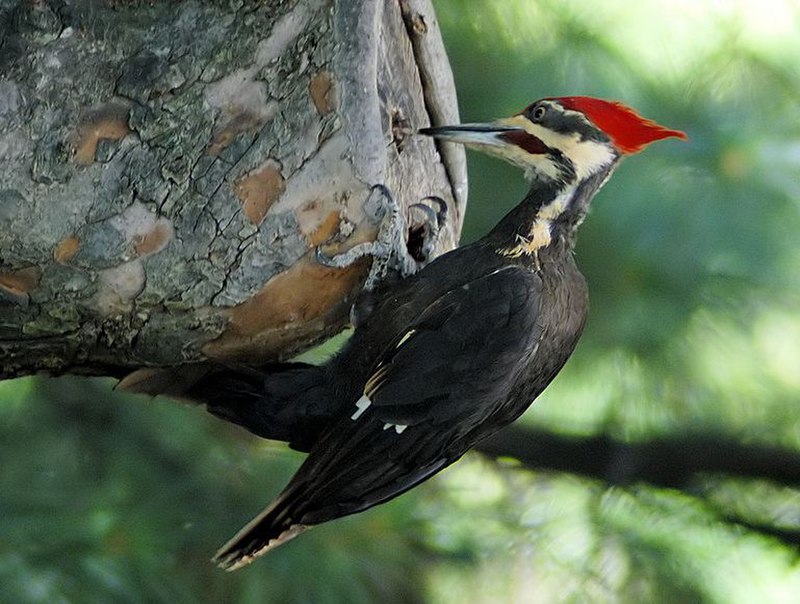
Woodpeckers are an incredibly diverse bird species, found all over the world except for Australia, New Guinea, New Zealand, Madagascar and the extreme polar regions.
They live in a variety of habitats including forests and woodlands but also rocky hillsides and deserts with no trees.
Their beaks are adapted to pecking at tree bark to find food such as insects or larvae hidden beneath it while they use their long tongues to catch them from deep inside crevices.
Woodpeckers have tough skulls that protect their brains from impact when they bang into things during drumming – a behaviour used by males for territorial signalling and reproduction purposes which is done using strong rapid beats against hollow objects like dead branches or metal poles.Scientific classification:
| Kingdom | Animalia |
| Phylum | Chordata |
| Class | Aves |
| Order | Piciformes |
| Infraorder | Picides |
| Family | Picidae Leach, 1820 |
Also Featured In: Most Common Types of Bangladeshi Birds, Common Serbian Birds
10. Old World Flycatchers
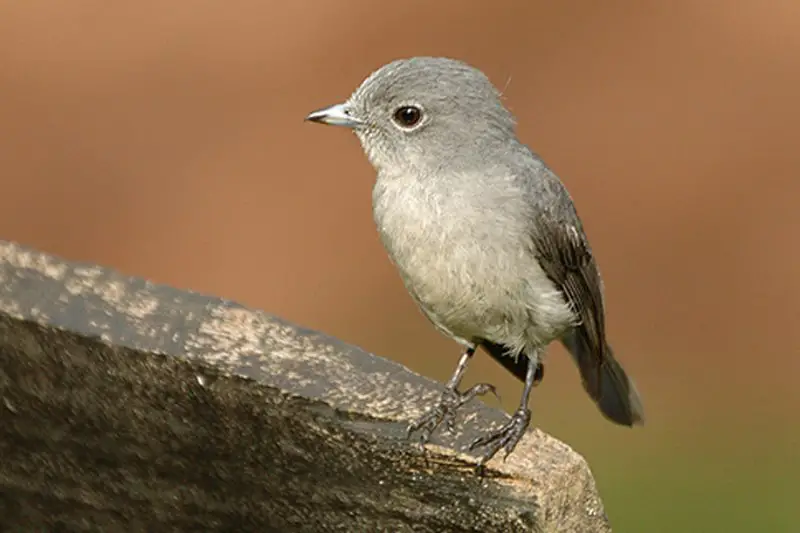
The Old World Flycatcher is a family of small passerine birds, native to Europe, Africa and Asia. They are mainly insectivorous arboreal birds that feed on insects they catch in the air or trees.
Their wingspan ranges from 5-11 inches long with males usually being slightly larger than females.
The coloration of these birds can range greatly depending on species but typically have dull greyish brown upperparts and pale undersides which help them blend into their environment for hunting purposes.
Bluethroat (Luscinia svecica) and Northern Wheatear (Oenanthe oenanthe) are two exceptions as they can be found in North America too.
These charming little creatures make fun additions to birdwatching lists all over the world because of their vibrant colors and interesting behaviors.Scientific classification:
| Kingdom | Animalia |
| Phylum | Chordata |
| Class | Aves |
| Order | Passeriformes |
| Superfamily | Muscicapoidea |
| Family | Muscicapidae Fleming J., 1822 |
Also Featured In: Common Birds in Japan, Turkey Birds You Should Know
11. Tyrant Flycatchers
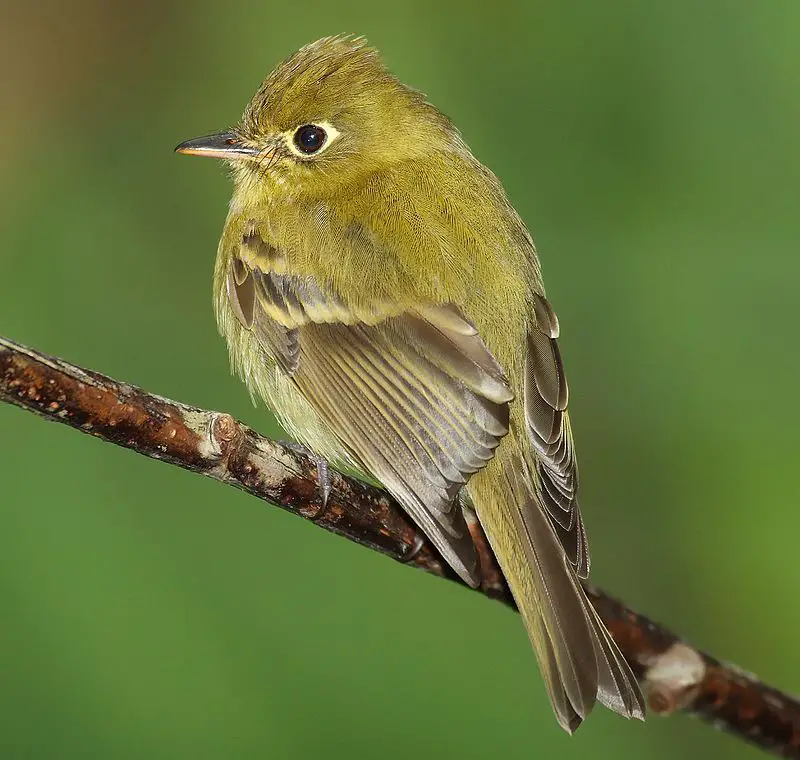
Tyrant flycatchers are a family of birds found in North and South America, containing over 400 species. These birds come in an array of shapes and sizes, with vibrant plumage to match.
They�re the most diverse avian family across all countries they inhabit except for the United States and Canada.
Their diet consists mainly of insects but also includes small reptiles or amphibians where available.
The behavior varies between each bird; some prefer open areas while others like dense forests as their habitat � many even migrate regularly.
Tyrant Flycatchers have adapted well to human presence thanks to the abundance of food sources that often accompany it � such as backyards, parks etc..
All things considered these incredible creatures are truly amazing.Scientific classification:
| Kingdom | Animalia |
| Phylum | Chordata |
| Class | Aves |
| Order | Passeriformes |
| Parvorder | Tyrannida |
| Family | Tyrannidae Vigors, 1825 |
Also Featured In: Birds of Argentina, Birds that You’ll Find in Puerto Rico
12. Red-Breasted Nuthatch
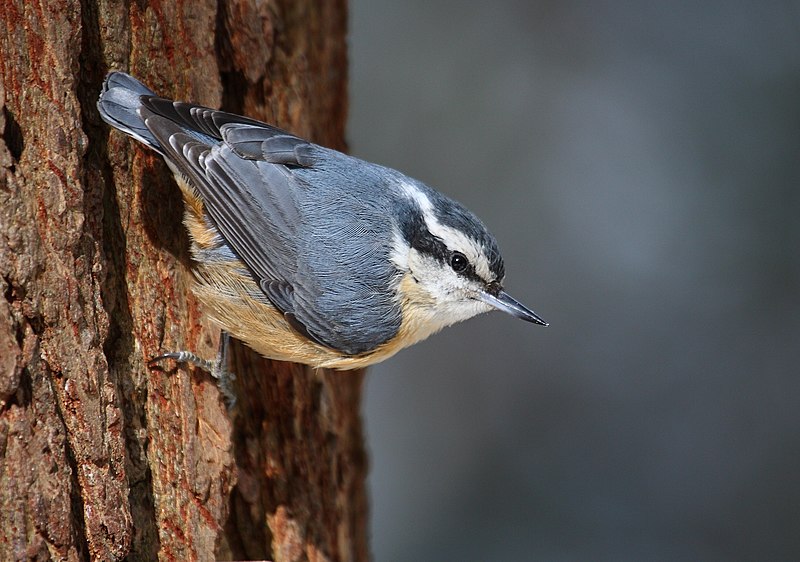
The Red-breasted Nuthatch is a beautiful and vocal songbird that can be found in coniferous forests across Canada, Alaska, the northeastern United States and western US.
This small bird has blue-grey upperparts with cinnamon underparts, a white throat and face with black eye stripe, straight grey bill and black crown.
Its call sounds like a tin trumpet; it’s high-pitched yet nasal.
During mating season they form monogamous pairs to build their nest near tree trunks or branches at low heights off the ground where they lay 2 – 8 eggs at once.
They are very active little birds who love clinging to trees while searching for insect larvae or seeds within the bark of trees which helps control pest populations.Scientific classification:
| Kingdom | Animalia |
| Phylum | Chordata |
| Class | Aves |
| Order | Passeriformes |
| Family | Sittidae |
| Genus | Sitta |
| Species | S. canadensis |
Also Featured In: Common Birds in Canada, Birds That Live around Seattle
13. Pine Grosbeak
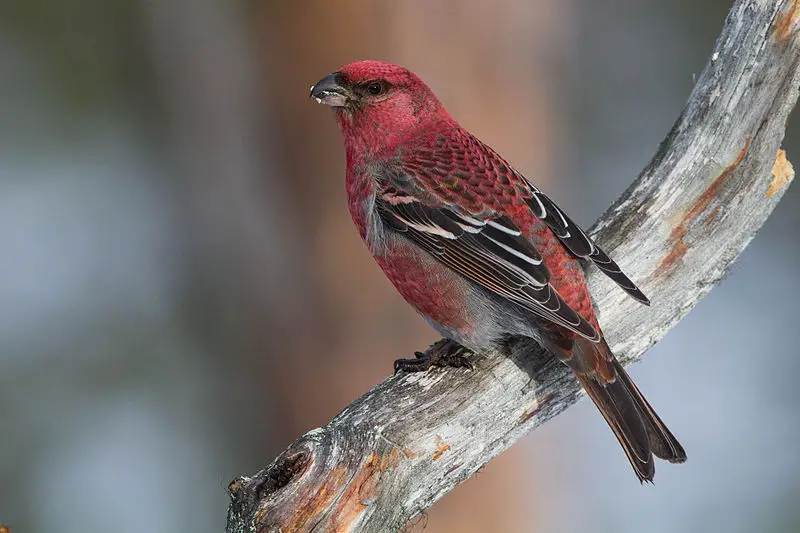
Pine grosbeak is a beautiful bird found across Alaska, western US, Canada and Fennoscandia to Siberia. It belongs to the family of true finch and it is the only species in its genus Pinicola.
This frugivorous bird has bright red feathers on its head and wings with yellowish white underparts that make it very attractive.
During winter season they feed mostly on small fruits like rowans, blueberries etc., while during summer months their diet consists mainly of insects.
They are shy birds but can be seen perched at high branches or singing from the topmost trees if you look carefully enough.Scientific classification:
| Kingdom | Animalia |
| Phylum | Chordata |
| Class | Aves |
| Order | Passeriformes |
| Family | Fringillidae |
| Subfamily | Carduelinae |
| Genus | Pinicola Vieillot, 1808 |
| Species | P. enucleator |
Also Featured In: Birds of Nova Scotia, Spiritual Birds
14. Red-Tailed Hawk
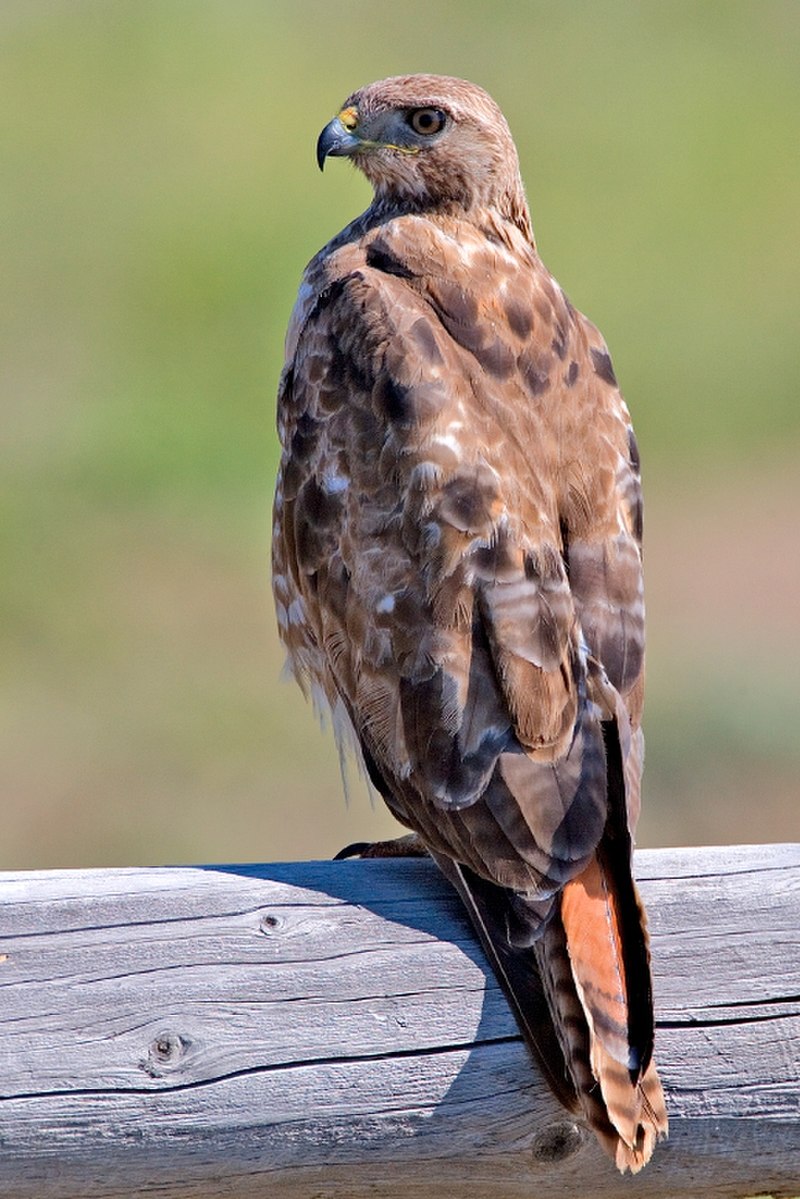
The Red-tailed Hawk is a majestic bird of prey with its distinctive red tail. It can be found throughout North America, from Alaska in the north to Panama and the West Indies in the south.
This species belongs to Buteo genus, which makes it one of most common raptors on earth.
These hawks mainly hunt small mammals such as rabbits or squirrels but also feed on reptiles and birds during migration season.
Unlike other predator birds, they prefer open areas for hunting like fields or grasslands rather than dense forests.
They build their nests high up on trees where they stay all year long unless disturbed by humans or animals nearby.
Their presence has become an iconic part of American culture due to their frequent sightings around homes and parks alike making them beloved creatures among people everywhere.Scientific classification:
| Kingdom | Animalia |
| Phylum | Chordata |
| Class | Aves |
| Order | Accipitriformes |
| Family | Accipitridae |
| Genus | Buteo |
| Species | B. jamaicensis |
Also Featured In: Dominican Republic birds, Birds that Live in the Deserts
15. Tundra Swan

The Tundra swan is a small species of swan found in the Holarctic region. It can be divided into two separate taxa, Bewick’s Swan and Whistling Swan.
The former inhabits the Palearctic area while the latter resides near North America.
These birds are typically white with black bills and eyes but their legs vary from yellow to greyish-black depending on which subspecies they belong to.
They feed mainly on aquatic plants such as algae, roots, tubers and various types of seeds.
During migration these birds fly together in large flocks that may contain hundreds or even thousands of individuals at one time.
This majestic bird is an important part of many wetland ecosystems around the world where it plays a vital role in controlling vegetation growth as well as dispersing nutrients across its habitat range.Scientific classification:
| Kingdom | Animalia |
| Phylum | Chordata |
| Class | Aves |
| Order | Anseriformes |
| Family | Anatidae |
| Genus | Cygnus |
| Species | C. columbianus |
Also Featured In: Ireland Birds, Common Slovakian Birds
16. Ruby-Throated Hummingbird
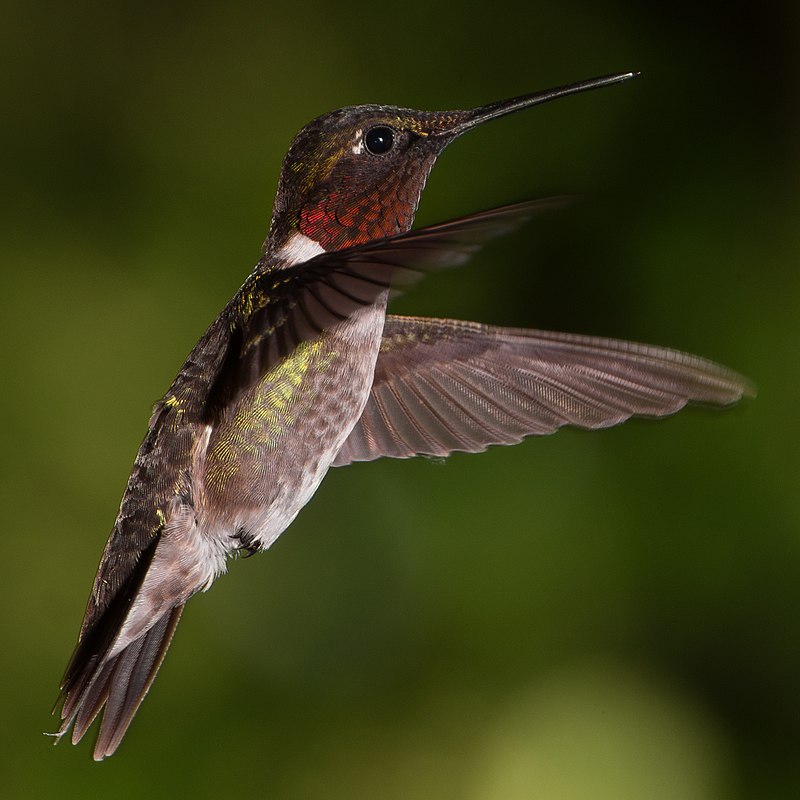
The ruby-throated hummingbird (Archilochus colubris) is a species of hummingbird that has an impressive migration pattern, spending the winter in Central America, Mexico and Florida before flying to Canada and other parts of Eastern North America for breeding season.
It’s by far the most common type seen east of the Mississippi River in North America.
Formally described by Swedish naturalist Carl Linnaeus in 1758, this tiny bird has bright metallic green upperparts with white underparts, a small black bill and a red throat patch which gives it its name; they measure around 3 inches long on average.
They feed primarily on nectar from flowers but also eat insects such as flies or mosquitoes for extra protein during their migrations or when raising young chicks.Scientific classification:
| Kingdom | Animalia |
| Phylum | Chordata |
| Class | Aves |
| Order | Apodiformes |
| Family | Trochilidae |
| Genus | Archilochus |
| Species | A. colubris |
Also Featured In: Georgia Birds, Birds in Iowa Spring
17. Purple Finch
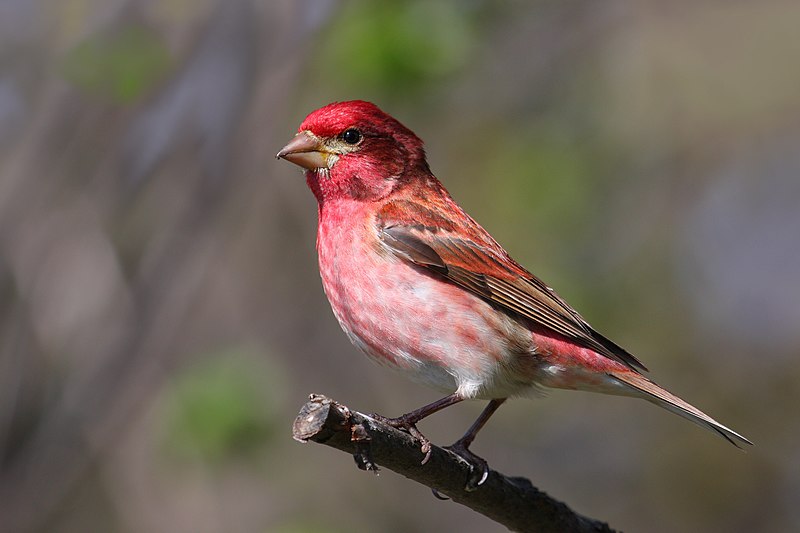
The Purple Finch is a species of finch from North America, belonging to the Fringillidae family.
It’s also known as an “American Rosefinch” due to its resemblance in color and size to some European rosefinches.
Their plumage ranges from pinkish-purple on their heads and wings, with a light brown underside.
They are small birds that measure about 5-6 inches long with short thin beaks for eating seeds and insects.
In addition, they have thick round bodies which help them stay warm during cold winters in the northern parts of their range.
The Purple Finch has adapted well over time making it easier for them to survive even though there are increasing threats posed by humans such as deforestation or habitat destruction caused by development projects near their habitats.Scientific classification:
| Kingdom | Animalia |
| Phylum | Chordata |
| Class | Aves |
| Order | Passeriformes |
| Family | Fringillidae |
| Subfamily | Carduelinae |
| Genus | Haemorhous |
| Species | H. purpureus |
Also Featured In: Magenta Birds You Didn’t Know, Birds You’ll Find in Vancouver Island
18. Scarlet Tanager
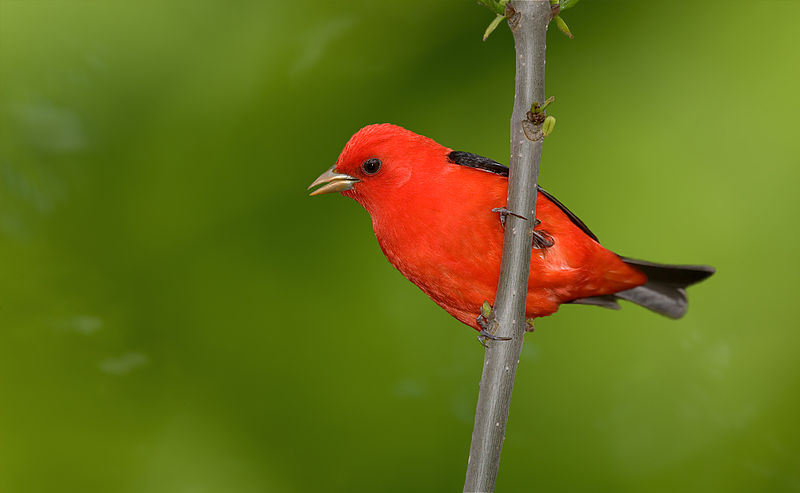
The Scarlet Tanager is a beautiful medium-sized bird found in parts of North and South America. It belongs to the Cardinal family, and has striking red plumage with black wings and tail feathers.
Its song is similar to other cardinals yet also unique in its own way – it’s recognizable by its high whistles that become lower towards the end.
The species feeds mainly on insects as well as berries from trees or shrubs during breeding season, when they may form loose flocks over open woodlands foraging for food.
They are highly territorial birds during nesting season which happens between April and June each year; both males and females fiercely defend their nests against intruders such as cats or squirrels.Scientific classification:
| Kingdom | Animalia |
| Phylum | Chordata |
| Class | Aves |
| Order | Passeriformes |
| Family | Cardinalidae |
| Genus | Piranga |
| Species | P. olivacea |
Also Featured In: Yellow Connecticut Birds, Common Yellow Birds of Idaho
19. Brown Creeper
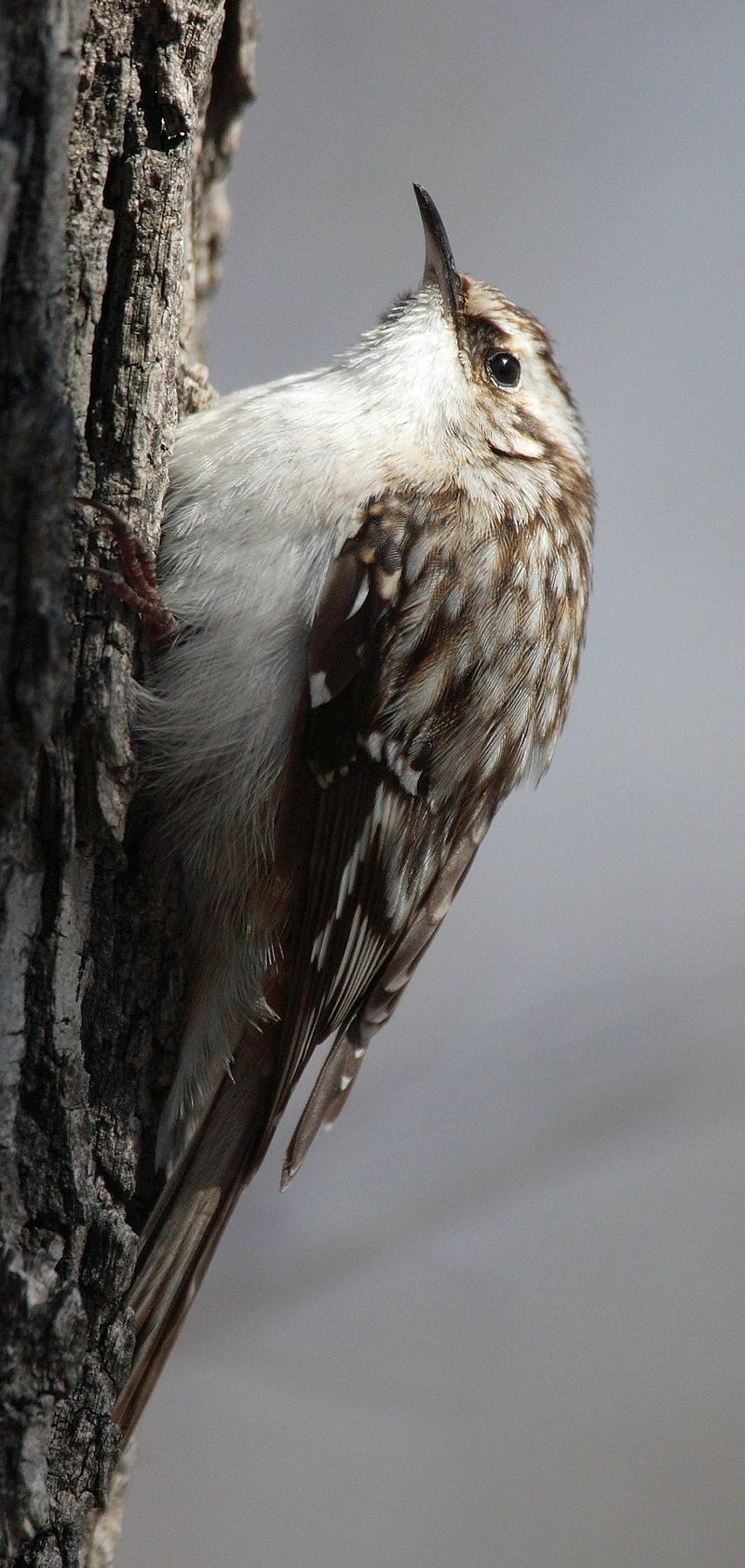
The Brown Creeper is a small songbird belonging to the Certhiidae family and is native to North America. It has brown upperparts with light spotting that resembles tree bark, as well as white underparts.
Its bill is long and thin with a slight downward curve while its tail is also long yet stiff; this helps it creep up trees.
This bird feeds mainly on insects which can be found in crevices of barks or dead plants, thanks to its curved bill which allows it access these hard-to-reach places.
When searching for food they move diagonally upwards around trunks so their camouflage blends in perfectly with the background making them difficult to spot.Scientific classification:
| Kingdom | Animalia |
| Phylum | Chordata |
| Class | Aves |
| Order | Passeriformes |
| Family | Certhiidae |
| Genus | Certhia |
| Species | C. americana |
Also Featured In: Chickadees Birds, New Hampshire Birds You Should Know
20. Common Redpoll
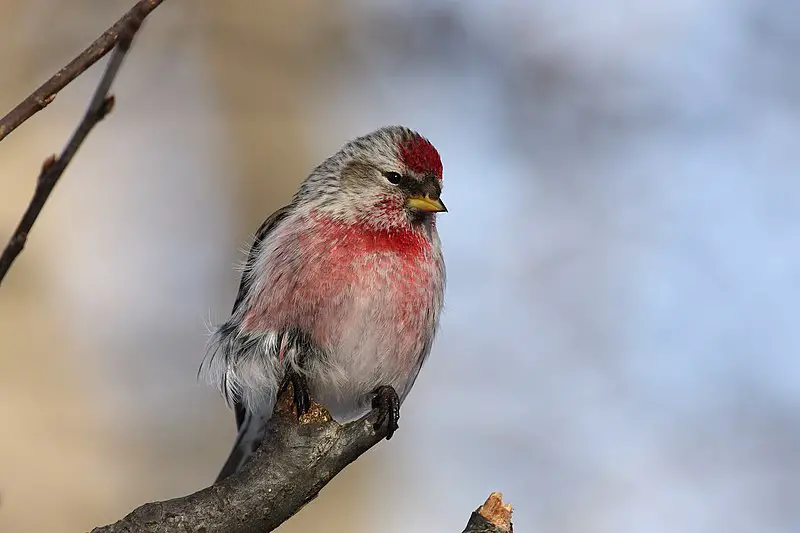
The Common Redpoll is a species of bird belonging to the finch family. It has an orange-red crown, white breast and grey back with two black stripes running down either side.
Its wings are barred in browns and its tail feathers have a grayish tinge at their tips. The redpoll breeds mainly south from Arctic regions in habitats that contain shrubs or thickets.
First classified by Linnaeus in 1758 under the binomial name Fringilla flammea, it’s genus Acanthis originates from Ancient Greek akantha meaning “thorn” or “prickle”.
This small yet colourful bird feeds mainly on seeds such as thistles during summer months but switches over to birch catkins when winter arrives – making them a common sight throughout much of North America and Eurasia.Scientific classification:
| Kingdom | Animalia |
| Phylum | Chordata |
| Class | Aves |
| Order | Passeriformes |
| Family | Fringillidae |
| Subfamily | Carduelinae |
| Genus | Acanthis |
| Species | A. flammea |
Also Featured In: Finches Species, Most Common Winter Birds
21. Red Crossbill
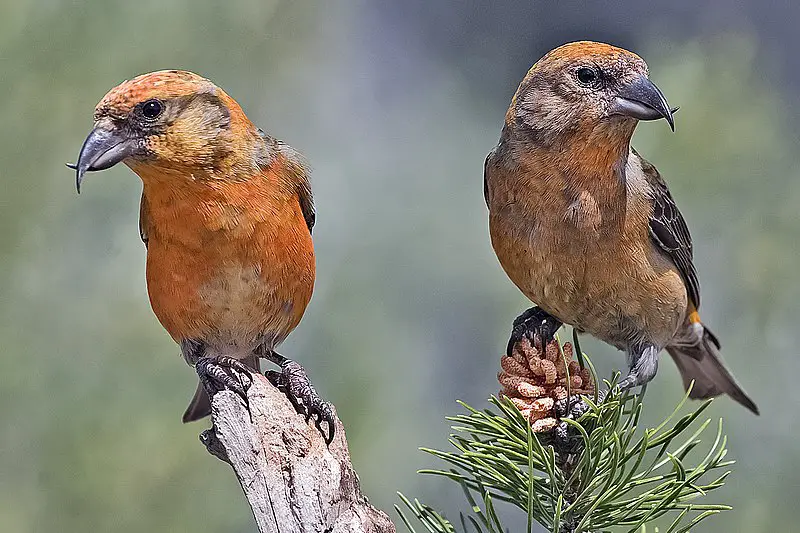
The Red Crossbill is a small passerine bird belonging to the finch family. It has distinctively crossed mandibles, which it uses to extract seeds from conifer cones and other fruits.
This species can be identified by its vivid colouring; males are red or orange in hue whilst females tend to have more green or yellow feathers.
Furthermore, there is considerable variation between individuals of this species when it comes to their beaks size and shape as well as their calls—which range from short trills through chirps and harsh cackles up until loud rattling sounds at times.
They’re an interesting sight in many parts of Europe, particularly during winter months where they often feed on pine cone seeds that drop down onto lower branches of trees.Scientific classification:
| Kingdom | Animalia |
| Phylum | Chordata |
| Class | Aves |
| Order | Passeriformes |
| Family | Fringillidae |
| Subfamily | Carduelinae |
| Genus | Loxia |
| Species | L. curvirostra |
Also Featured In: Common Birds in Saskatchewan, Common Birds in Alberta
22. Cassin’s Finch
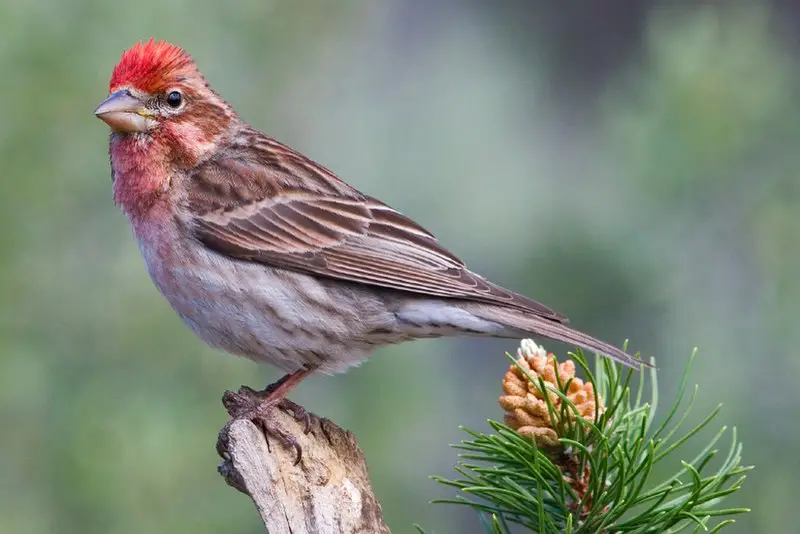
Cassin’s finch is a species of bird belonging to the Fringillidae family. It has brown wings and tail, with a longer bill than that of the purple finch.
Adult males are raspberry red on their head, breast, back and rump with streaked backs and undertail feathers.
The adult female Cassin’s Finch is duller in colouration than male but still shows pinkish tones around its face and neck area as well as subtle streaks across its body.
This species can be found mainly in western North America from Alaska down to California where they inhabit coniferous forests along mountain slopes or near riversides at elevations between 500-3000 meters above sea level.
They feed mainly on grasshoppers, caterpillars and other insects which they pick up while foraging through vegetation or by flying out onto open ground surfaces.Scientific classification:
| Kingdom | Animalia |
| Phylum | Chordata |
| Class | Aves |
| Order | Passeriformes |
| Family | Fringillidae |
| Subfamily | Carduelinae |
| Genus | Haemorhous |
| Species | H. cassinii |
Also Featured In: Red birds You’ll See in Arizona, Red Birds You’ll See in Oklahoma
23. Two-Barred Crossbill
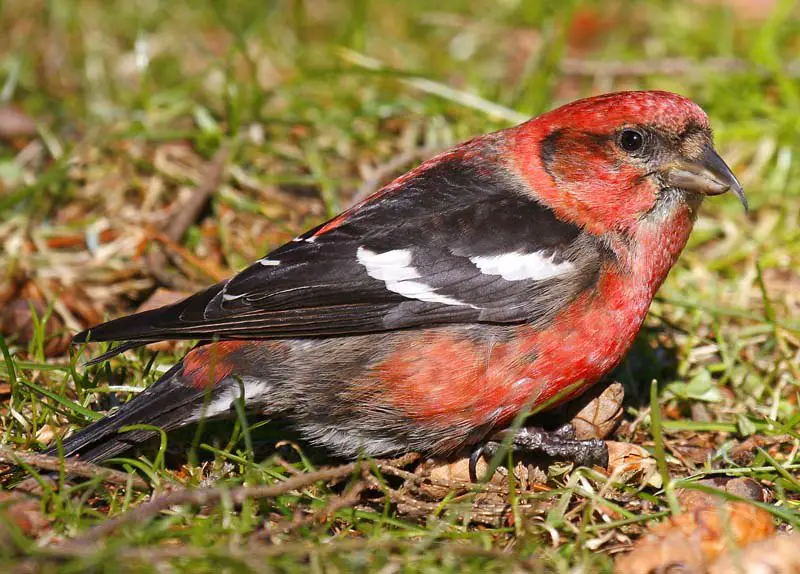
The Two-barred crossbill is a small passerine bird belonging to the finch family Fringillidae.
It gets its scientific name, Loxia leucoptera, from Ancient Greek – with ‘Loxia’ meaning ‘crosswise’ and ‘leucoptera’ translating to “white-winged” in reference to its white wings.
The species has two subspecies: the white-winged crossbill (Loxia leucoptera leucoptera) that can be found in North America and the two bar crossbill (Loxia leucocephala) which inhabits Europe, Asia as well as parts of northern Africa.
These birds feed mainly on conifer seeds but have also been seen consuming insects such as beetles or caterpillars during breeding season when food resources are scarce for their young ones.
They construct nests made out of twigs near trunks of spruce trees where they lay 2–6 eggs at one time.Scientific classification:
| Kingdom | Animalia |
| Phylum | Chordata |
| Class | Aves |
| Order | Passeriformes |
| Family | Fringillidae |
| Subfamily | Carduelinae |
| Genus | Loxia |
| Species | L. leucoptera |
Also Featured In: Birds that Migrate through Illinois in the Spring, Red Birds You’ll Commonly Found in Texas
24. Dickcissel
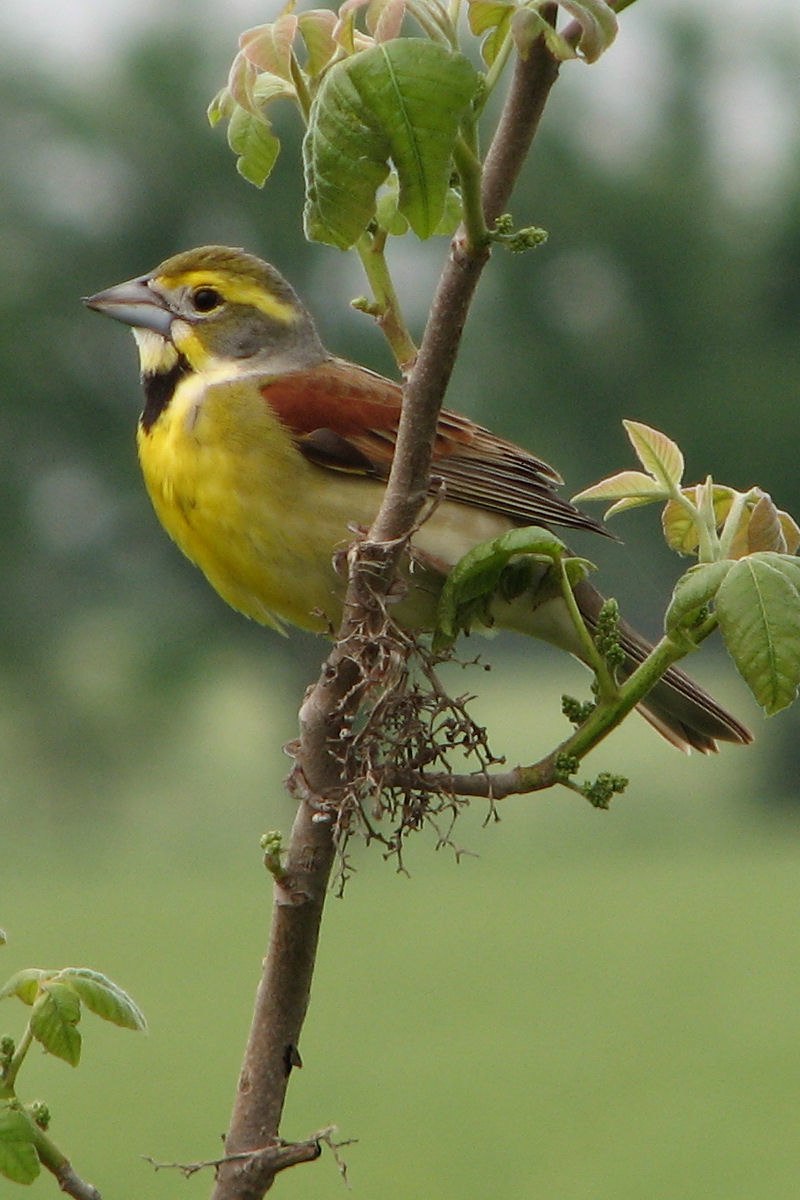
The Dickcissel is a small migratory bird belonging to the Cardinalidae family. It breeds in grasslands of the Midwestern US, and winters in Central America, northern Colombia and Venezuela.
Being the only member of its genus Spiza, it stands out from other birds with its distinctive song that sounds like “dick-sis-sel”.
With a light brown body and black streaks on its wings as well as chestnut colored shoulders and crowns, these birds are quite attractive to watch.
They also have short bills which they use while foraging through tall prairie vegetation or searching around fence posts for insects.
Although not endangered yet, their population has declined due to loss of habitat caused by human development so conservation efforts should be taken up soon.Scientific classification:
| Kingdom | Animalia |
| Phylum | Chordata |
| Class | Aves |
| Order | Passeriformes |
| Family | Cardinalidae |
| Genus | Spiza Bonaparte, 1824 |
| Species | S. americana |
Also Featured In: Sparrows Species, Birds that Live in the Grasslands
25. Painted Bunting
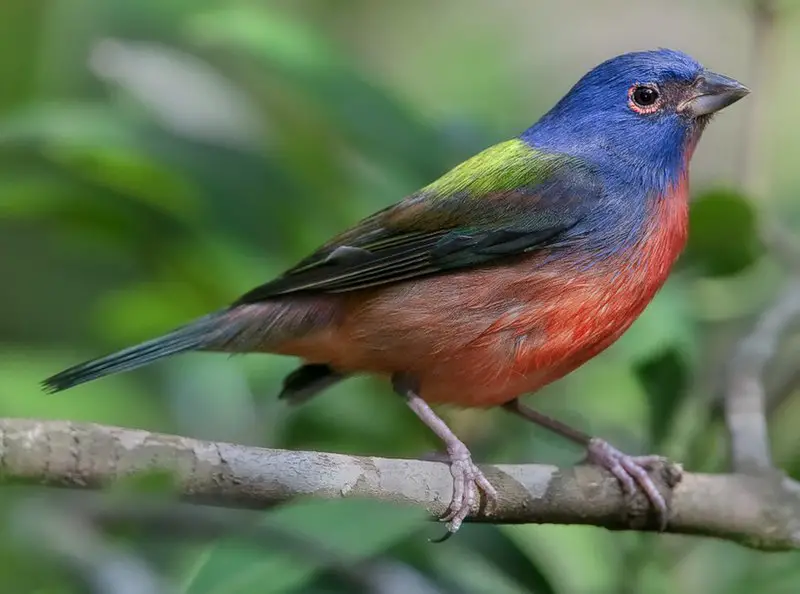
The Painted Bunting is an eye-catching bird from the Cardinal family, native to North America. It was first described by Carl Linnaeus in his eighteenth-century Systema Naturae.
The males of this species are particularly striking; they have brightly coloured plumage which only appears after their second year of life and can be distinguished from female birds through close inspection.
These colourful songbirds are a delight for any avid birder, with their vibrant hues bringing joy to nature lovers everywhere.
They often inhabit woodland areas where there is plenty of seed and insects available for them to feed on – as well as some shrubbery so that they can hide away safely when needed.Scientific classification:
| Kingdom | Animalia |
| Phylum | Chordata |
| Class | Aves |
| Order | Passeriformes |
| Family | Cardinalidae |
| Genus | Passerina |
| Species | P. ciris |
Also Featured In: Texas Birds, Flocks Birds around Us
26. Rose-Breasted Grosbeak
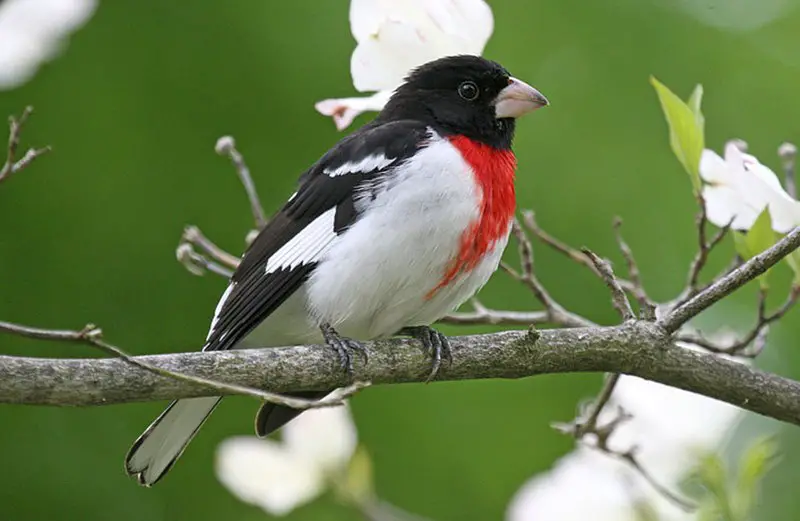
The Rose-breasted Grosbeak is a large, brightly coloured bird belonging to the Cardinal family. Males have black heads and wings, with white breasts boasting a bright rose patch.
Females are more muted in colouring being mostly buffy brown or greyish overall but still featuring the distinctive rose breast patch.The two sexes also exhibit marked sexual dimorphism.
These birds inhabit open woodlands across North America where they feed on seeds gleaned from foliage as well as fruits such as cherries and blueberries during their breeding season which runs from April through August each year.Scientific classification:
| Kingdom | Animalia |
| Phylum | Chordata |
| Class | Aves |
| Order | Passeriformes |
| Family | Cardinalidae |
| Genus | Pheucticus |
| Species | P. ludovicianus |
Also Featured In: Nebraska Birds, Most Common Songs Birds that Live around You
27. Summer Tanager
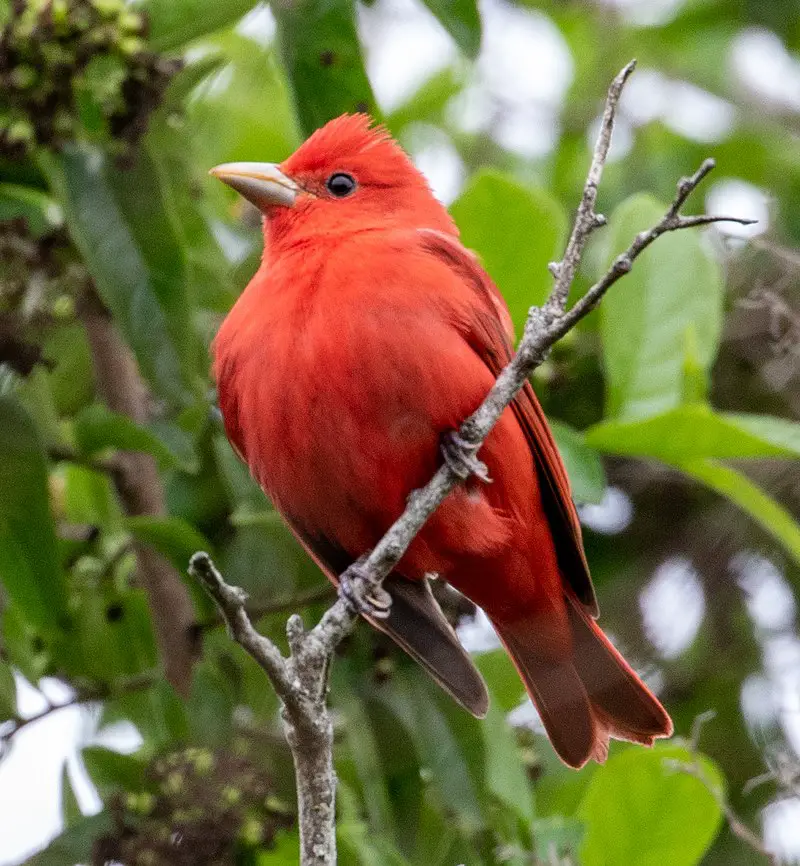
The Summer Tanager is a stunningly beautiful member of the cardinal family. Native to North and South America, this medium-sized songbird features striking red plumage on its back with yellow underparts.
It has a pointed black bill and long tail feathers that can be seen fluttering through the air when it flies.
The species’ vocalizations are quite similar to those of other members of its genus as well, which often include short whistles and chirps in addition to longer songs made up of various phrases or syllables.
With their vibrant colors and melodic voices, these birds make an eye-catching sight any time they appear.Scientific classification:
| Kingdom | Animalia |
| Phylum | Chordata |
| Class | Aves |
| Order | Passeriformes |
| Family | Cardinalidae |
| Genus | Piranga |
| Species | P. rubra |
Also Featured In: birds of Arkansas, Birds Live in Arkansas
28. Palm Warbler
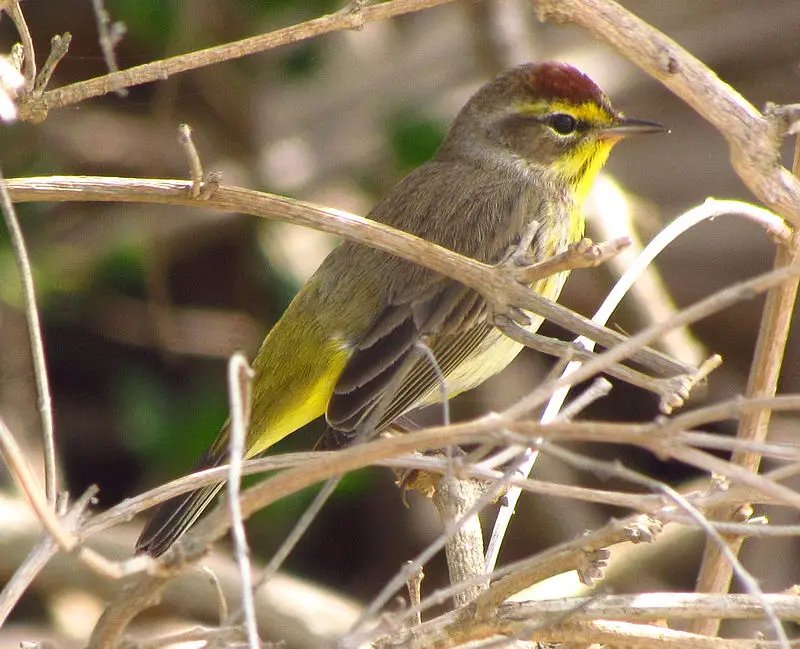
The palm warbler is a small songbird found in the New World, belonging to the warbler family.
It has two distinct subspecies that differ mainly in their plumage – eastern palm warblers have yellower underparts and bolder rufous streaks on their breast and flanks than western ones.
These birds are light olive above with whitish bellies and yellow throats.
They also have distinctive white-tipped tail feathers which they often flick while foraging or singing during breeding season, when males establish territories through song duels.
The diet of these birds consists mostly of insects such as beetles, moths, ants and caterpillars collected from trees or ground vegetation like grasses or sedges.
Palm Warblers migrate long distances between its wintering grounds near Central America to northeastern North American states where it breeds each summer before returning south again come fall.Scientific classification:
| Kingdom | Animalia |
| Phylum | Chordata |
| Class | Aves |
| Order | Passeriformes |
| Family | Parulidae |
| Genus | Setophaga |
| Species | S. palmarum |
Also Featured In: birds of Rhode Island, Autumn Birds You Should Know
29. American Redstart
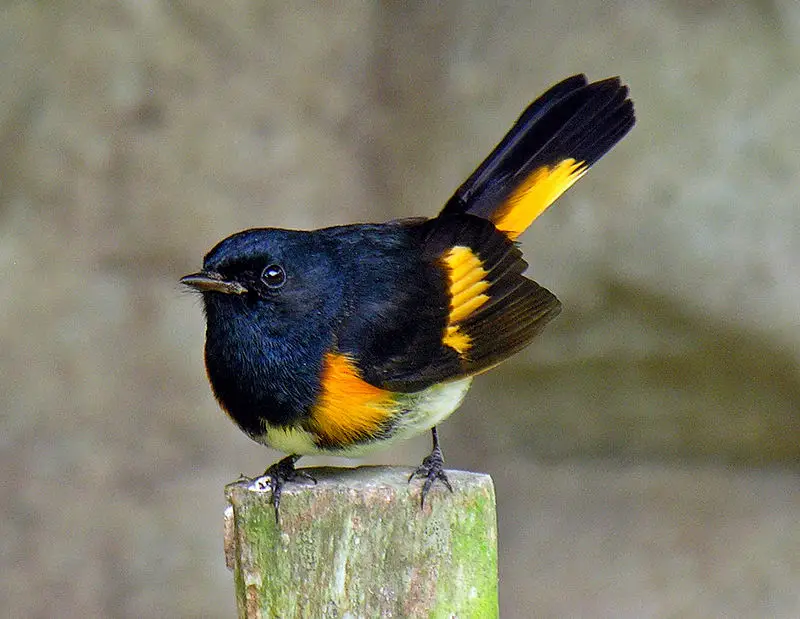
The American Redstart is a beautiful New World Warbler, first documented by Carl Linnaeus in 1758.
It has an elegant black and orange plumage that sets it apart from other birds.
The genus name Setophaga comes from the Ancient Greek words ‘sēs’ meaning moth and ‘phagos’, which means eating – referencing its insect-eating habits.
Its song is one of joy, with short repeating phrases making up their melodic tune.
They are mostly found hopping around trees on their long legs during breeding season but migrate to Central America for winter months when food sources become scarce in North America.Scientific classification:
| Kingdom | Animalia |
| Phylum | Chordata |
| Class | Aves |
| Order | Passeriformes |
| Family | Parulidae |
| Genus | Setophaga |
| Species | S. ruticilla |
Also Featured In: birds of Vermont, Birds that Live in Mississippi
30. Northern Flicker
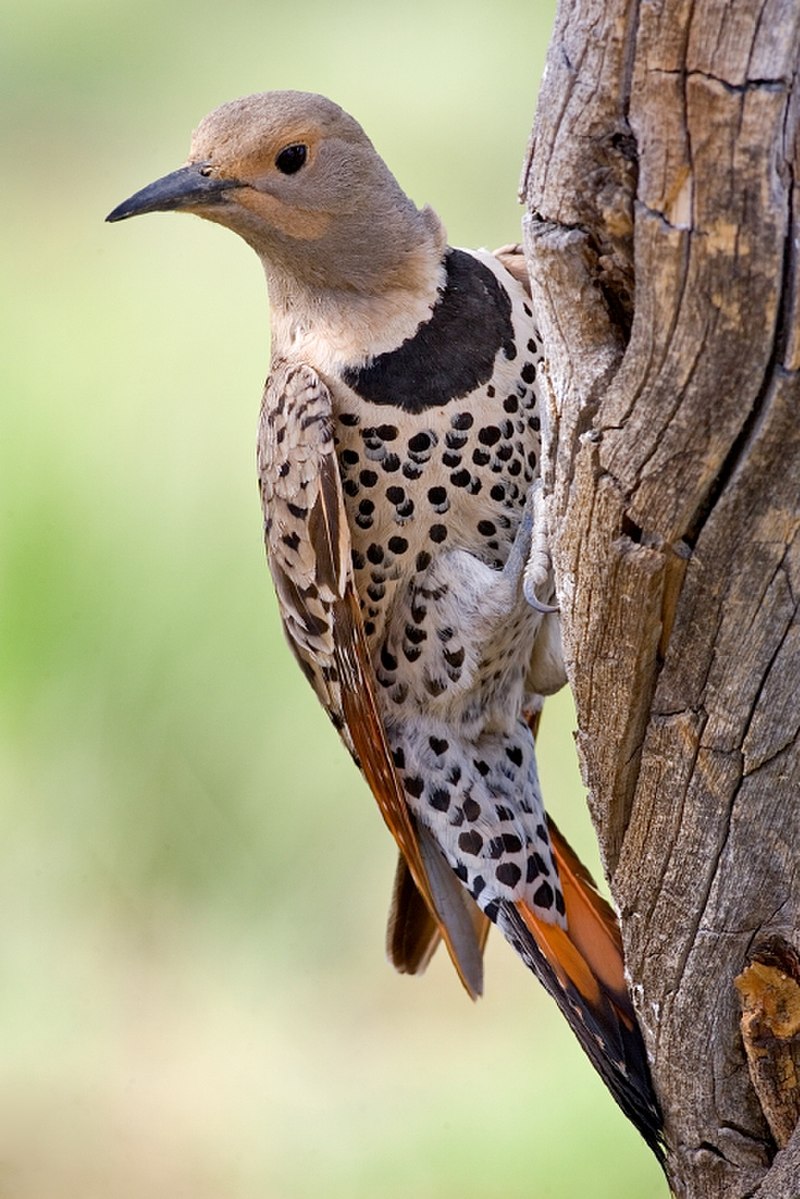
The Northern flicker is a woodpecker species found in North America, Central America, Cuba, and the Cayman Islands. This medium-sized bird is known for its unique migration behavior.
Over 100 common names are used to refer to the Northern flicker, one of them being “yellowhammer”. It is a beautiful bird with distinctive markings and a colorful plumage.
The Northern flicker is an important species in its ecosystem and plays a key role in maintaining a healthy balance in the environment.
Despite being a woodpecker, the Northern flicker has a diverse diet that includes insects, fruits, and seeds.
It is fascinating to observe this bird as it pecks at trees in search of food, communicates with its unique vocalizations and performs its incredible aerial displays.
The Northern flicker is truly a remarkable bird species that is worthy of our admiration and protection.Scientific classification:
| Kingdom | Animalia |
| Phylum | Chordata |
| Class | Aves |
| Order | Piciformes |
| Family | Picidae |
| Genus | Colaptes |
| Species | C. auratus |
Also Featured In: Birds That Live in Colorado, Birds Commonly Found in New York